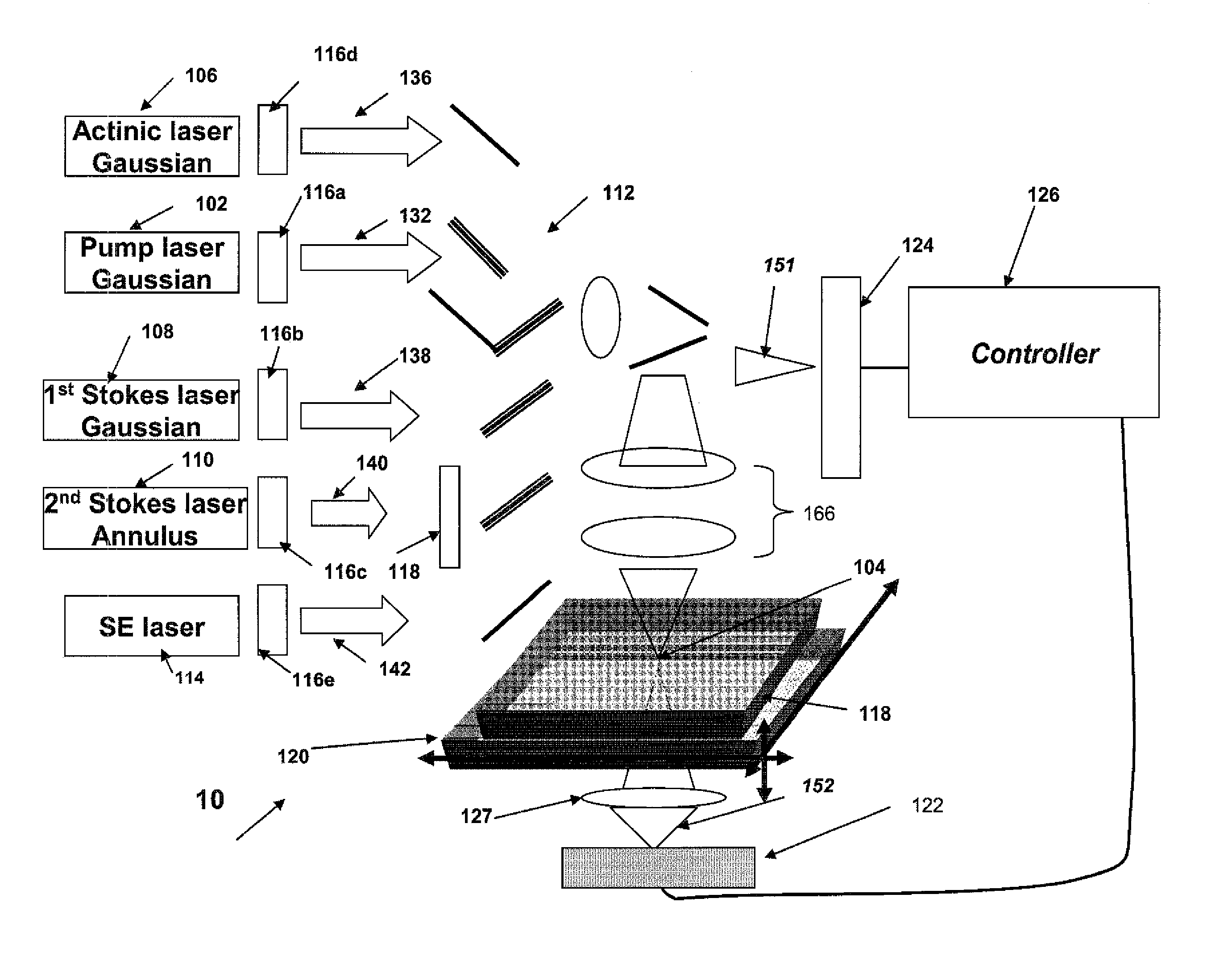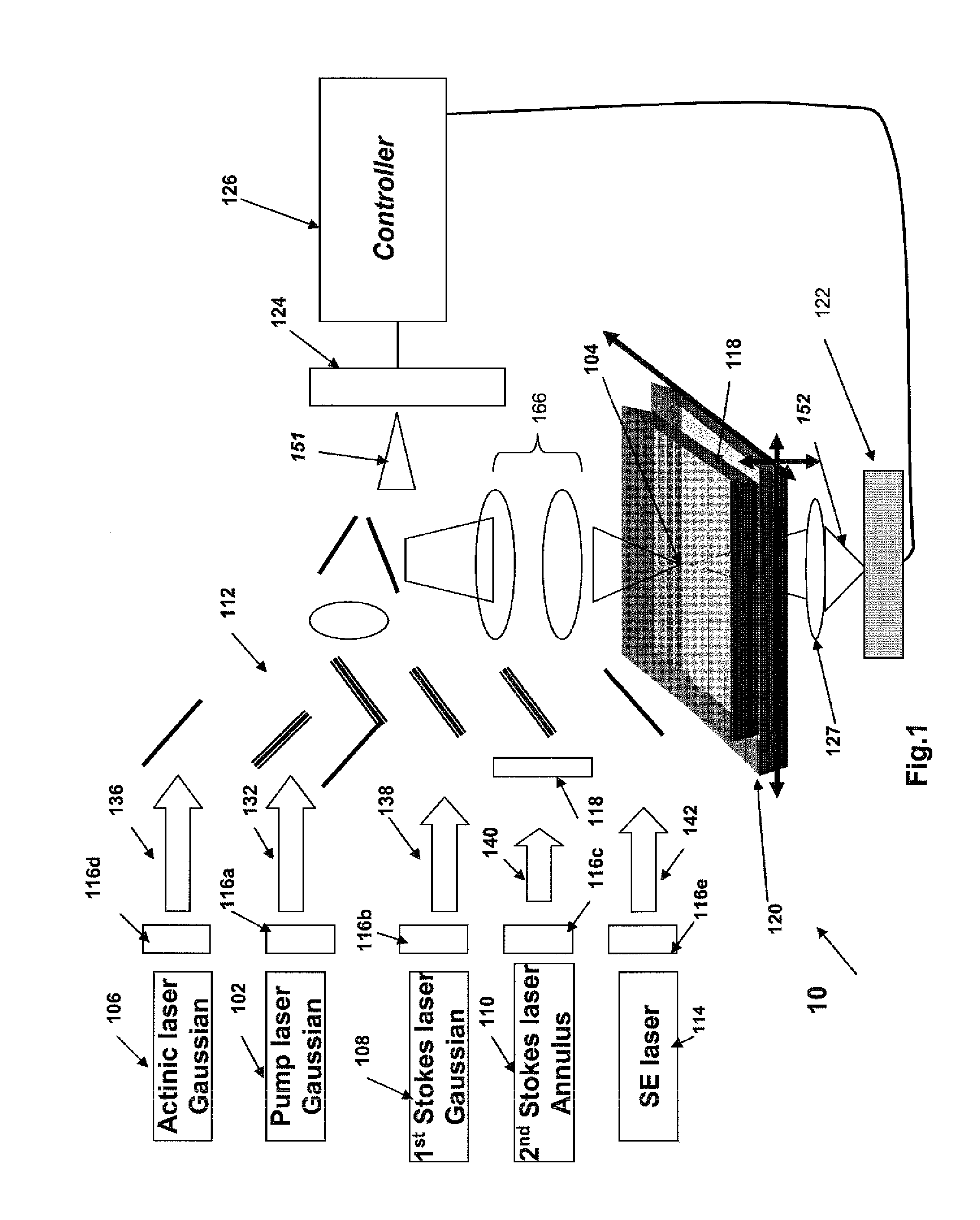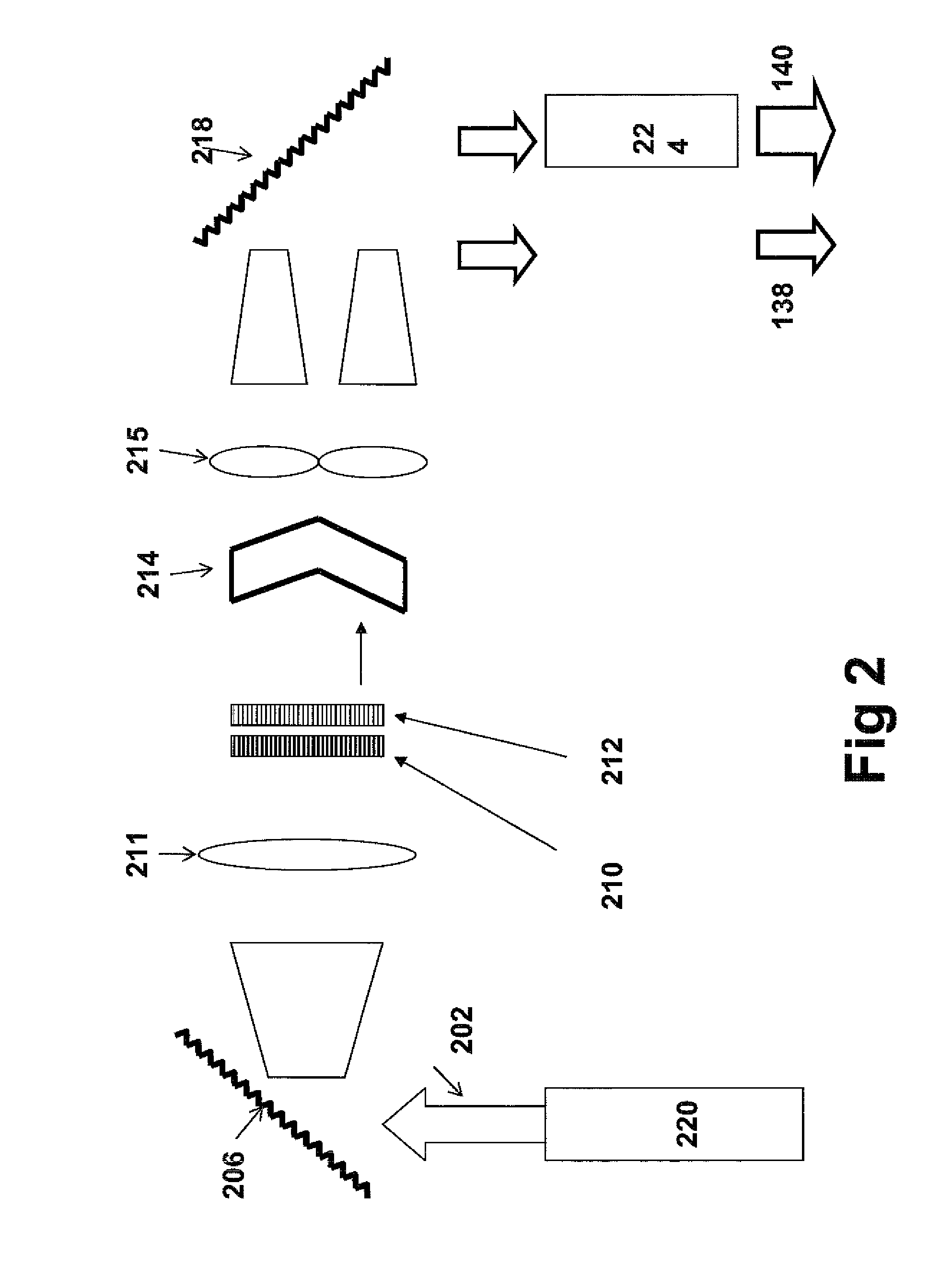Method and system for raman, fluorescence, lithographic, stimulated emission and photochemical imaging beyond the diffraction limit
a raman and photochemical imaging technology, applied in the field of coherent anti-stokes raman scattering (cars), fluorescence, lithographic, stimulated fluorescence, etc., can solve the problem of limited application of raman process in biological imaging and hyper-resolution, inability to identify intrinsic molecules that are not strongly fluorescent, and inefficient raman process. to achieve the effect of improving the signal-to-noise ratio
- Summary
- Abstract
- Description
- Claims
- Application Information
AI Technical Summary
Benefits of technology
Problems solved by technology
Method used
Image
Examples
Embodiment Construction
[0035]Throughout all the figures, same or corresponding elements may generally be indicated by same reference numerals. These depicted embodiments are to be understood as illustrative of the invention and not as limiting in any way. It should also be understood that the figures are not necessarily to scale and that the embodiments are sometimes illustrated by graphic symbols, phantom lines, diagrammatic representations and fragmentary views. In certain instances, details which are not necessary for an understanding of the present invention or which render other details difficult to perceive may have been omitted.
[0036]Referring now to FIG. 1, a laser system 10 includes four lasers 102, 106, 108 and 110, as well as an additional (optional) laser 114. The laser 102 is referred to as pump laser emitting laser pulses of picosecond duration with a Gaussian beam profile in form of a pump beam 132. The pump beam 132 is focused in a diffraction limited spot 104 in the focal plane of a high ...
PUM
 Login to View More
Login to View More Abstract
Description
Claims
Application Information
 Login to View More
Login to View More - R&D
- Intellectual Property
- Life Sciences
- Materials
- Tech Scout
- Unparalleled Data Quality
- Higher Quality Content
- 60% Fewer Hallucinations
Browse by: Latest US Patents, China's latest patents, Technical Efficacy Thesaurus, Application Domain, Technology Topic, Popular Technical Reports.
© 2025 PatSnap. All rights reserved.Legal|Privacy policy|Modern Slavery Act Transparency Statement|Sitemap|About US| Contact US: help@patsnap.com



